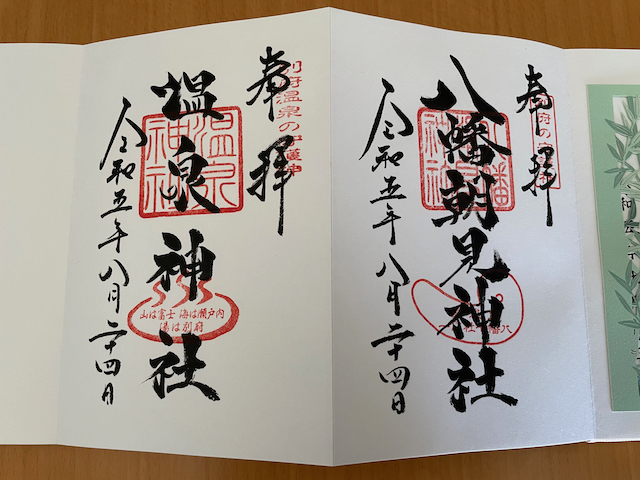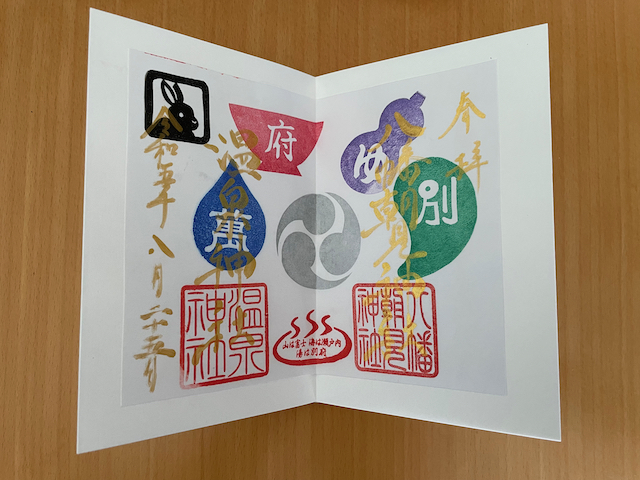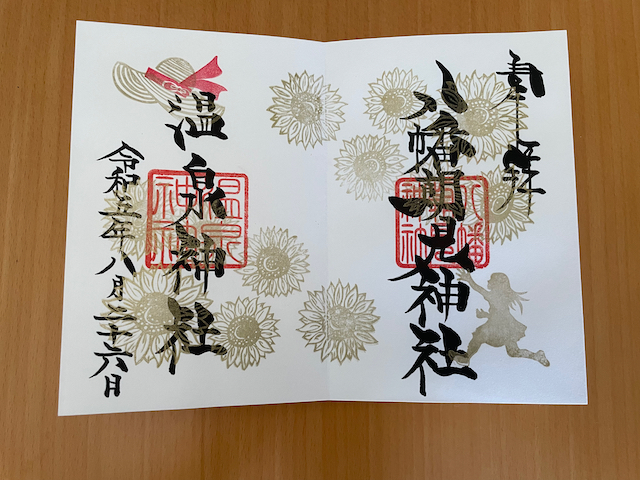A couple of weeks ago I went on holiday to Beppu, in Kyūshū, with my daughter, and while I was there I visited a jinja, Hachiman Asami Jinja, several times.
One reason for making multiple visits was that the jinja is putting a lot of energy into its goshuin. The main sanctuary is a merger of two jinja, Hachiman Jinja and Onsen Jinja, and so they have two regular goshuin, one for each. These are ¥300 each, and I got them on my first visit.

They also have two special goshuin for the year. These are prepared in advance on sheets of washi, printed with stamps representing various aspects of the jinja, and rabbits, because this is the year of the rabbit. You can only get these goshuin this year. They are ¥2000 each, but come with a bag for your goshuin book. (So I now have two bags.) I got those on the second visit.


Finally, they also do very limited edition goshuin, with gold printing, available for only a couple of days (and in some cases, only for limited periods of time on specific days). By luck, one of those was available on the last day of my visit, so I went and got that as well. It was ¥800.

The jinja also had some rules displayed about their goshuin. They have a limit of one of each per person per visit, although you can get multiple different goshuin on a single visit (and thus I was able to get both the special ones for this year on a single day). You are not allowed to get them on behalf of anyone else. That is a general principle, because a goshuin is a record of your visit to the jinja — you can’t get that for someone who isn’t there. Finally, they asked people not to give the name of the person who wrote the goshuin. There are goshuin fans who travel around Japan collecting them, and they do have a thing about the handwriting. I’m guessing that people have caused trouble by asking for someone by name when they weren’t on duty, or maybe by criticising someone’s penmanship.
Putting effort into goshuin seems to be a fairly common way to get people to visit a jinja more frequently, and it seems like a good strategy to me. People like collecting things, particularly limited editions, and the donations required for these are hardly going to bankrupt anyone, particularly with the limit.
Another interesting point was the subsidiary jinja. There are several subsidiary Inari Jinja, two of which are right next to each other. My guess is that they were brought from somewhere else to the jinja precincts, but they are still clearly separate jinja. I guess it is possible that they identify different kami with Inari, and thus cannot be merged because they actually enshrine different kami. In any case, if you want to venerate Inari at this Hachiman jinja, you are spoilt for choice.